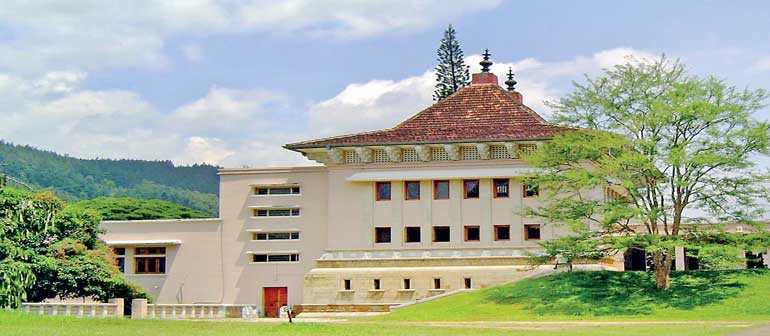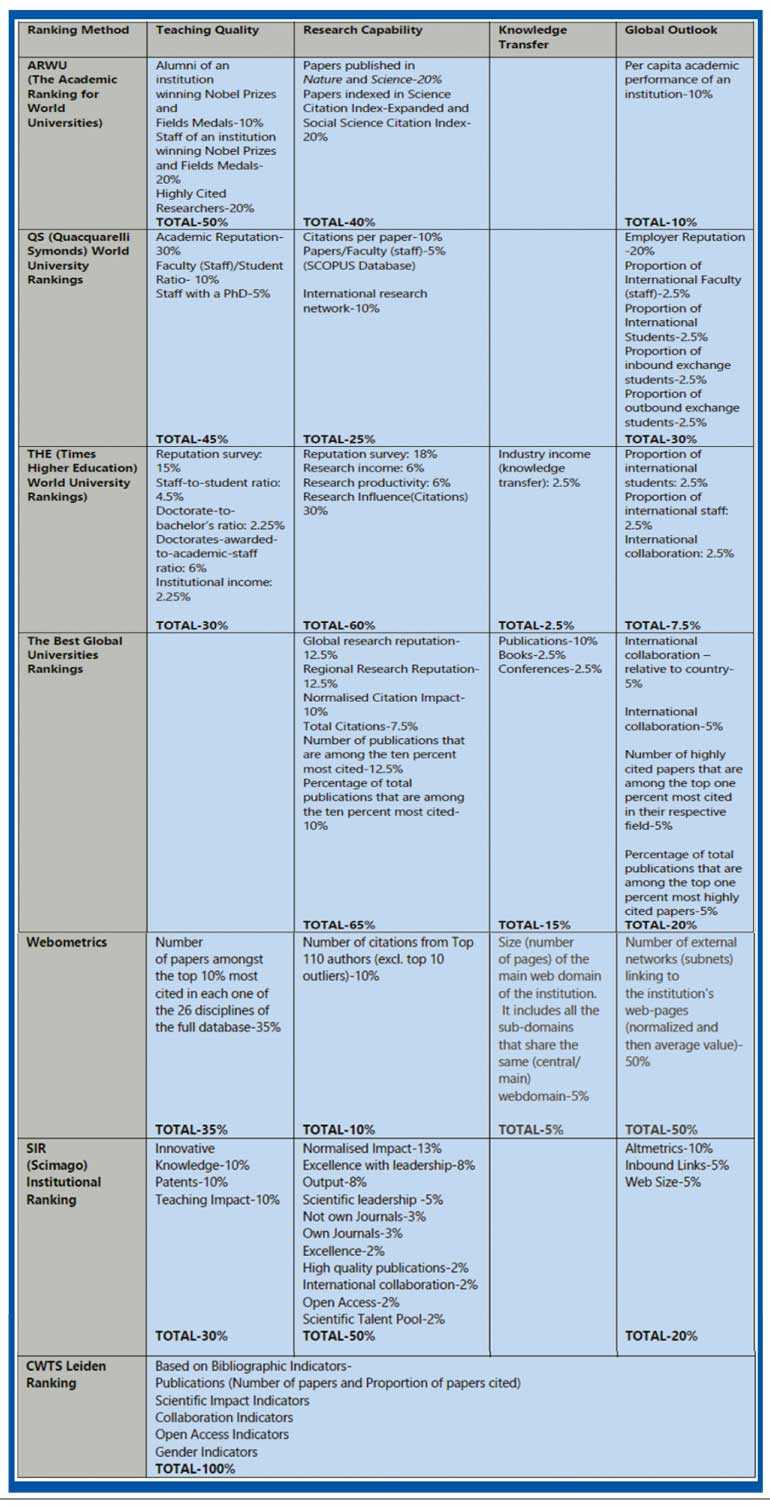Sunday Apr 13, 2025
Sunday Apr 13, 2025
Tuesday, 28 July 2020 00:34 - - {{hitsCtrl.values.hits}}

If the University of Peradeniya is a world class university, it must appear in the top 500 or in the top 1000 of each university ranking system in the world as there are many university ranking systems in the world. In some of the world university ranking systems, none of the Sri Lankan universities were listed. Are we being duped?
Sri Lanka is a developing country. It seems that this adjective would remain in our vocabulary for quite some time to describe Sri Lanka.
Economists usually interpret ‘development’ in terms of Per Capita Income and Gross National Product. They tend to establish an income threshold to declare a country as a ‘developed nation’, if the per capita income is above the stated threshold. Is the per capita income a real indicator of development?
Development and freedom
Prof. Amartya K. Sen won the 1998 Nobel Prize in Economics for his contributions to “welfare economics”. Prof. Sen suggested that “the development is a process of expanding human freedom that allows people to lead lives that they have reason to live”. He named five interrelated freedoms, namely political, economic facilities, social opportunities, transparency and security. 
Prof. Sen sees the provision of public education, healthcare, social safety nets, good microeconomic policies, productivity and protecting environment, is paramount to ensure this freedom. He was instrumental in the development of the Human Development Index (HDI) as an alternative measure of development. The United Nations adopted Prof. Sen’s suggestion in 1990. Over the years, the HDI calculation process has been improved. From 1999 onwards, it is based on three indicators ‘longevity’, ‘education’ and ‘income per head’. Do we enjoy such freedom?
As a person who enjoys such freedom and also who feels HDI in motion, in Australia, I am a firm believer of Prof. Sen’s definition of development. I believe that real development should see signs of improvements in every facet of our lives. If I am constrained of taking own life decisions freely within any aspect of my life, I am poor in that segment of life.
Suppose I have enough money to consult a doctor for medical treatments. If a doctor specialised in the particular medical discipline is not available or if there are no medical testing equipment for the specialist doctor to perform necessary tests, both are signs of substandard development. Even if I could afford it, I am unable to buy that service within the environment I live. So the country is poor in this area and I am poor because of ill health.
In a really developed country, people have the real freedom to make own decisions of their lives, without being structurally restricted. The need could be religious, political, educational, housing, employment and so on. As a developing country, Sri Lanka’s long-term aim should be the achievement of this holistic freedom in our lives. That does not mean that all are rich in monetary terms. This is all about availability of the varieties of freedom. This is why even in any developed country both the rich and the poor people exist in monetary terms.
We celebrate our National Freedom Day on 4 February each year. I personally do not believe Ceylon earned freedom in 1948. Until 1948, Great Britain ruled our island. The English navigated all over the world and occupied in countries like Ceylon. They did not land in any country to make those countries better or to use those countries as their new homes. They did it purely for economic and trade reasons. Hence, the English built buildings, roads and railway lines, sea ports, etc. at selected locations for their trading needs such as accommodation, transport, assembly, etc. They introduced British Law, their governance and administrative systems, health management systems and education systems as a part of their business development process.
We never liked their presence in our front yard and their influence on our way of lives, but, we never really resisted or forced them out of our lives or land. We did not make real sacrifices or shed a drop of blood to that effect. The English left Ceylon, only because India forced them out by making huge human sacrifices. There were no strategic and economic reasons for them to stay in Ceylon when they lost India which was the biggest resources market.
We thought we were liberated and won the ‘freedom’. Actually, one cannot give ‘freedom’ to a nation. Freedom must be earned by the inhabitants of a country by incorporating that feeling to their ways of lives. To earn it, we must identify what freedom means to us. Instead of offering us ‘freedom’, they left us a country in shackles.
The British divided the country into administrative districts and divided the nation’s social fabric as they wanted. They created social strata within each ethnicity by educating and promoting selected strata as they wished. We blindly believed such a social division was suitable for us. We assumed that the roads, railway lines, buildings, ports, airfields were at correct locations.
We admired the administrative systems, laws they gave us were the best for us. So, we continued with what we got for 72 years and looked back the path we marched. We could not see any signs of development milestones or social freedom. Hence, how could we celebrate ‘freedom’? Really, 4 February is a day of reflection, to think how we could achieve freedom.
Educational freedom
To be a developed nation, one of the key achievements is to have educational freedom. Our politicians as well as people mistakenly thought that freedom in education was the “free education”. This is why narrow-minded, ignorant people make noises against privately-funded educational institutions.
However, educational freedom means the availability of a world-class qualitative and quantitative education facilities for public to choose. It could be on offer, free of charge or for a fee. Such freedom enables anyone to choose and follow an educational path of own choice, with a sense of fulfilment and freedom.
World ranked universities in Sri Lanka
Recently, Times Higher Education World University Ranking was released and the University of Peradeniya was ranked within the 401-500 World’s Best Universities. While feeling a sense of pride as a Sri Lankan, I was equally puzzled why the University of Sri Jayewardenepura which attracts the cream of commerce stream students was not even in the list under Sri Lanka. It was more puzzling for me why the University of Moratuwa which is the first selection for the highest achievers of GCE Advanced Level in mathematics stream was also not in the list.
To complicate this matter further, if the University of Peradeniya is a world class university, it must appear in the top 500 or in the top 1000 of each university ranking system in the world as there are many university ranking systems in the world. In some of the world university ranking systems, none of the Sri Lankan universities were listed. Are we being duped?
Before you celebrate this achievement, I need to educate you on the number of world university ranking systems available, the assessment methodologies and the objectives of such rankings. Having this knowledge, our educational authorities could decide whether there is a need to seek such ranking status, if so, how could we achieve it?
Global university ranking systems
There are seven popular world university ranking systems. The objectives of having such ranking systems could be narrowed down to three. University authorities in developed countries want the brightest students to select their universities for education to use them for quality research activities which eventually contribute to secure patents for innovations.
The second objective is to attract more and more fee-paying students based on the ranks of the universities. The third objective is to secure funding from investors for high level research projects as a stable alternative revenue stream for the high ranked universities. Hence, almost all university ranking systems are designed to assess the achievement levels of the aforementioned three objectives by the universities. So, it is designed to rate competitive edge and degree of business achievements of each university.
The chart is a summary of assessment methodologies adopted by each ranking method. Each assessment methodology has own emphasis on certain aspects. However, in summary, all methodologies are supported by four key pillars, Teaching Quality, Research Capability, Knowledge Transfer and Global Outlook. It should be noted that the assessment criteria are interrelated and there is no way to avoid the fact that one criterion could also be intrinsically relevant to another. Hence, my listings of criteria under each pillar are approximations and best fits.
This chart shows where the world put their emphasis and energy when the rankings are calculated. Three out of seven methodologies have put 50% or more emphasis on the Research Capability. Even a controversial ranking method like Webometrics which is only based on the display of institutional data in the website and external network links to the institutional web-pages, is heavily dependent on the presence of research papers and quality information. Hence, its research category can be increased logically to 60% instead of the direct measure of 10% as shown in the chart.
If CWTS is excluded as it is a research only ranking method, all other recognised ranking methods have a range of 30-50% ratings for the teaching quality. Hence, it is reasonable to assume that if a university concentrates on Teaching Quality and Research Capability, the other two criteria would automatically be satisfied over the time when quality outcomes come out of the university system. International reputation of a local university and the graduates is earned only if the Teaching Quality and the Research Capability is uplifted and maintained.
(References: http://www.shanghairanking.com; https://www.topuniversities.com; https://www.timeshighereducation.com; https://www.usnews.com; https://www.webometrics.info; https://www.scimagoir.com; https://www.leidenranking.com)
Think globally and act locally
Some professionals are of the opinion that current international university ranking systems are biased towards research capability and our emphasis should be on teaching quality only. Politicians argue that our objective should be to produce graduates for the local needs and not for the international market. However, my view on this is slightly different.
Research at university level is supposed to be of the highest quality. Not only it requires sound theoretical knowledge but also it requires broader and in-depth reference of research material available. Also the researchers must be ready to make necessary perspective shift to be innovative.
Sri Lanka is no longer an island that could be governed in isolation. We are subjected to international influence and we have to make transactions with the rest of the world. What we develop and deliver must be of international standards. To face this challenge, we need an internationally recognised higher education system and international quality university graduates. It is highly unrealistic for us to be the best in the world in a short term.
Our aim is to form a path to academic excellence and walk along that path. Our outputs from the university system will be our human capital investments in the global business environment. This kind of strategy would help us to raise Sri Lankan Human Development Indicators on par with the developed world. (To be continued)
(Eng. Janaka Seneviratne is a Chartered Professional Engineer, a Fellow and an International Professional Engineer of both the Institution of Engineers, Sri Lanka and Australia. He holds two Masters Degrees in Local Government Engineering and in Engineering Management and at present, works for the Australian NSW Local Government Sector. His mission is to share his 32 years of local and overseas experience to inspire Sri Lankan professionals. He is contactable via [email protected].)


<h3 style="box-sizing: border-box; margin-top: 0px; margin-bottom: 0.5rem; font-size: 17px; color: rgb(33, 37, 41); font-family: -apple-system, BlinkMacSystemFont, " segoe="" ui",="" roboto,="" "helvetica="" neue",="" arial,="" "noto="" sans",="" sans-serif,="" "apple="" color="" emoji",="" "segoe="" ui="" symbol",="" emoji";="" margin-left:="" 15px;"="">Development and educational freedom – Part II